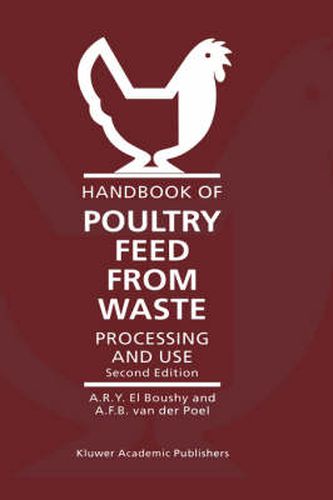Readings Newsletter
Become a Readings Member to make your shopping experience even easier.
Sign in or sign up for free!
You’re not far away from qualifying for FREE standard shipping within Australia
You’ve qualified for FREE standard shipping within Australia
The cart is loading…






This title is printed to order. This book may have been self-published. If so, we cannot guarantee the quality of the content. In the main most books will have gone through the editing process however some may not. We therefore suggest that you be aware of this before ordering this book. If in doubt check either the author or publisher’s details as we are unable to accept any returns unless they are faulty. Please contact us if you have any questions.
This book provides detailed scientific information on the processing of agro-waste material to provide inexpensive alternatives to non-traditional feedstuffs for use in poultry and farm animal nutrition. The types of waste material considered for such use include waste from poultry processing plants, hide and tanning, municipal refuse, and sewage sludge. Special attention is given to waste from fruit, vegetables and brewers’ dried grain. For each type of waste considered, detailed information on yields, chemical analysis, nutritive values, and biohazards is given. Special attention is paid to detailed processing methods with layouts. As the inclusion of wastes in diets can cause problems of palatability and feed acceptability, these important aspects are thoroughly discussed and solutions given. The aim of this book is to help create new feedstuffs for poultry and farm animals from the agro-industry and to mobilize the neglected waste as a feedstuff to lower the price of animal products such as eggs, meat and milk. Furthermore, this book aims to contribute to the campaign against hunger in the developing world and to reduce the competition between animals and human beings for cereals and pulses. Accordingly the global pollution problem will be reduced. This book should be useful to all those involved in the animal feed and poultry industries, in agricultural universities, and in research establishments where animal nutrition is studied and taught.
$9.00 standard shipping within Australia
FREE standard shipping within Australia for orders over $100.00
Express & International shipping calculated at checkout
Stock availability can be subject to change without notice. We recommend calling the shop or contacting our online team to check availability of low stock items. Please see our Shopping Online page for more details.
This title is printed to order. This book may have been self-published. If so, we cannot guarantee the quality of the content. In the main most books will have gone through the editing process however some may not. We therefore suggest that you be aware of this before ordering this book. If in doubt check either the author or publisher’s details as we are unable to accept any returns unless they are faulty. Please contact us if you have any questions.
This book provides detailed scientific information on the processing of agro-waste material to provide inexpensive alternatives to non-traditional feedstuffs for use in poultry and farm animal nutrition. The types of waste material considered for such use include waste from poultry processing plants, hide and tanning, municipal refuse, and sewage sludge. Special attention is given to waste from fruit, vegetables and brewers’ dried grain. For each type of waste considered, detailed information on yields, chemical analysis, nutritive values, and biohazards is given. Special attention is paid to detailed processing methods with layouts. As the inclusion of wastes in diets can cause problems of palatability and feed acceptability, these important aspects are thoroughly discussed and solutions given. The aim of this book is to help create new feedstuffs for poultry and farm animals from the agro-industry and to mobilize the neglected waste as a feedstuff to lower the price of animal products such as eggs, meat and milk. Furthermore, this book aims to contribute to the campaign against hunger in the developing world and to reduce the competition between animals and human beings for cereals and pulses. Accordingly the global pollution problem will be reduced. This book should be useful to all those involved in the animal feed and poultry industries, in agricultural universities, and in research establishments where animal nutrition is studied and taught.